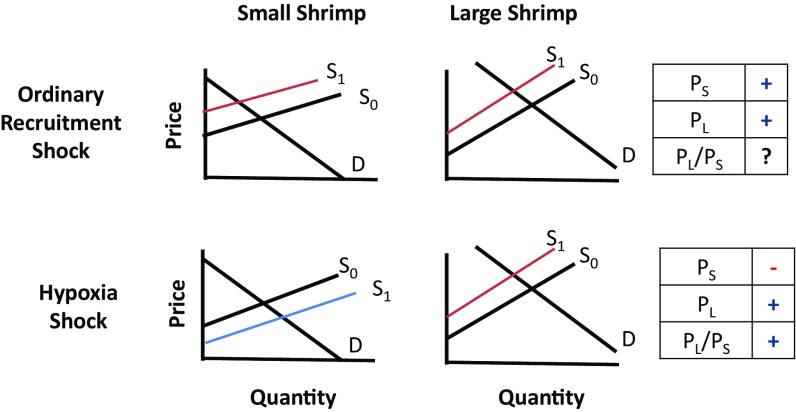Fig. 1.
Stylized model of the small and large shrimp markets. (Top) Short-run negative recruitment shock that decreases the abundance of new shrimp recruited into the fishery decreases the supply of both small and large shrimp (from S0 to S1). Holding demand (D) for each size class constant, both small and large shrimp prices (Ps and PL) increase. Predictions about the relative price change (PL/Ps) are ambiguous. (Bottom) Hypoxia shock increases the supply of small shrimp and decreases the supply of large shrimp due to aggregation (12) and bioenergetics effects on growth (13, 14). Holding D constant for each size class, Ps decreases and PL increases. The relative price (PL/Ps) increases unambiguously. The figure depicts the case of perfect market substitution between small and large shrimp, but the predictions hold for imperfect substitutes, PL = α(Ps)γ, where α > 0 is a constant and 0 ≤ γ ≤ 1 represents the degree of substitution, with γ = 1 being a perfect substitute (SI Appendix).

